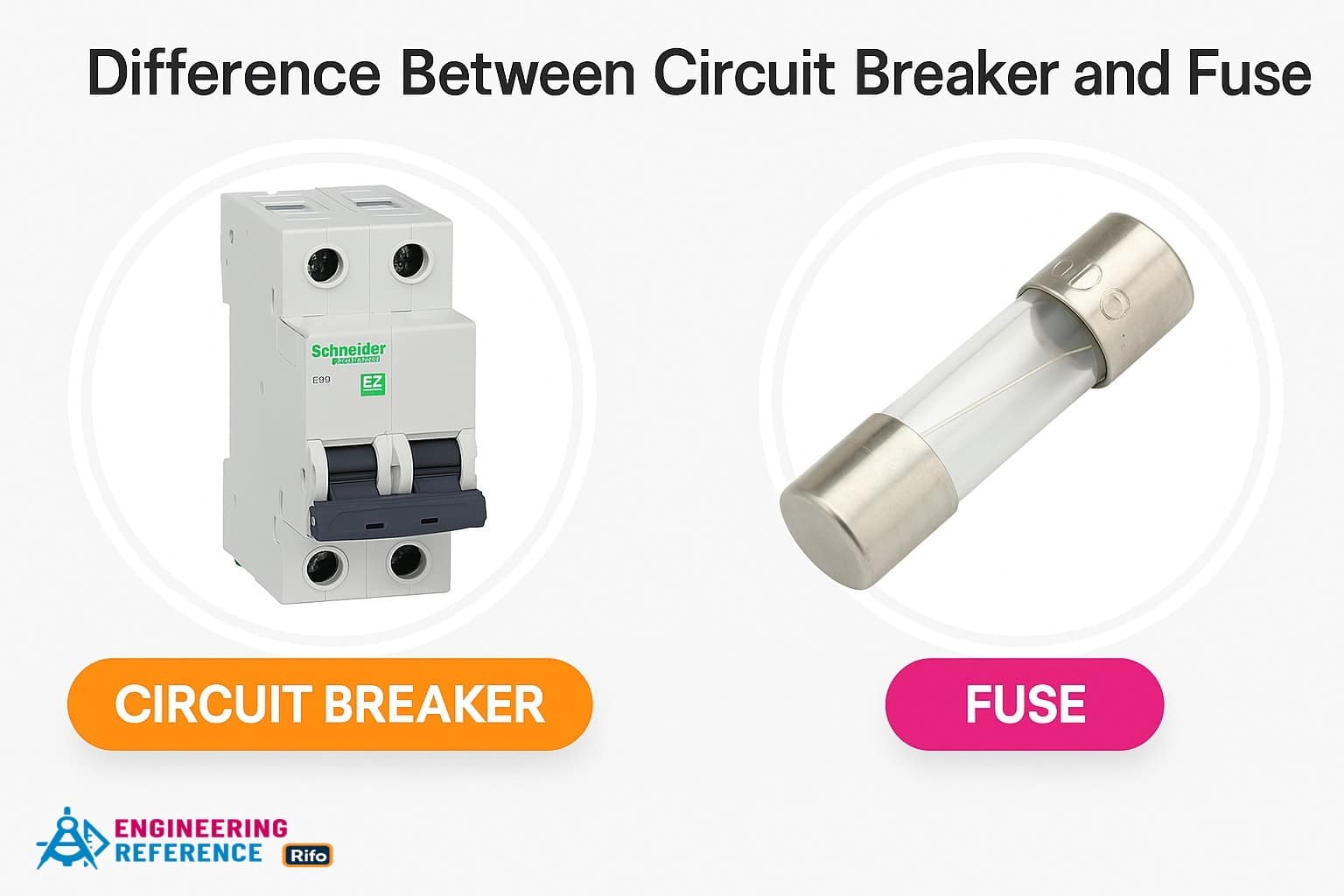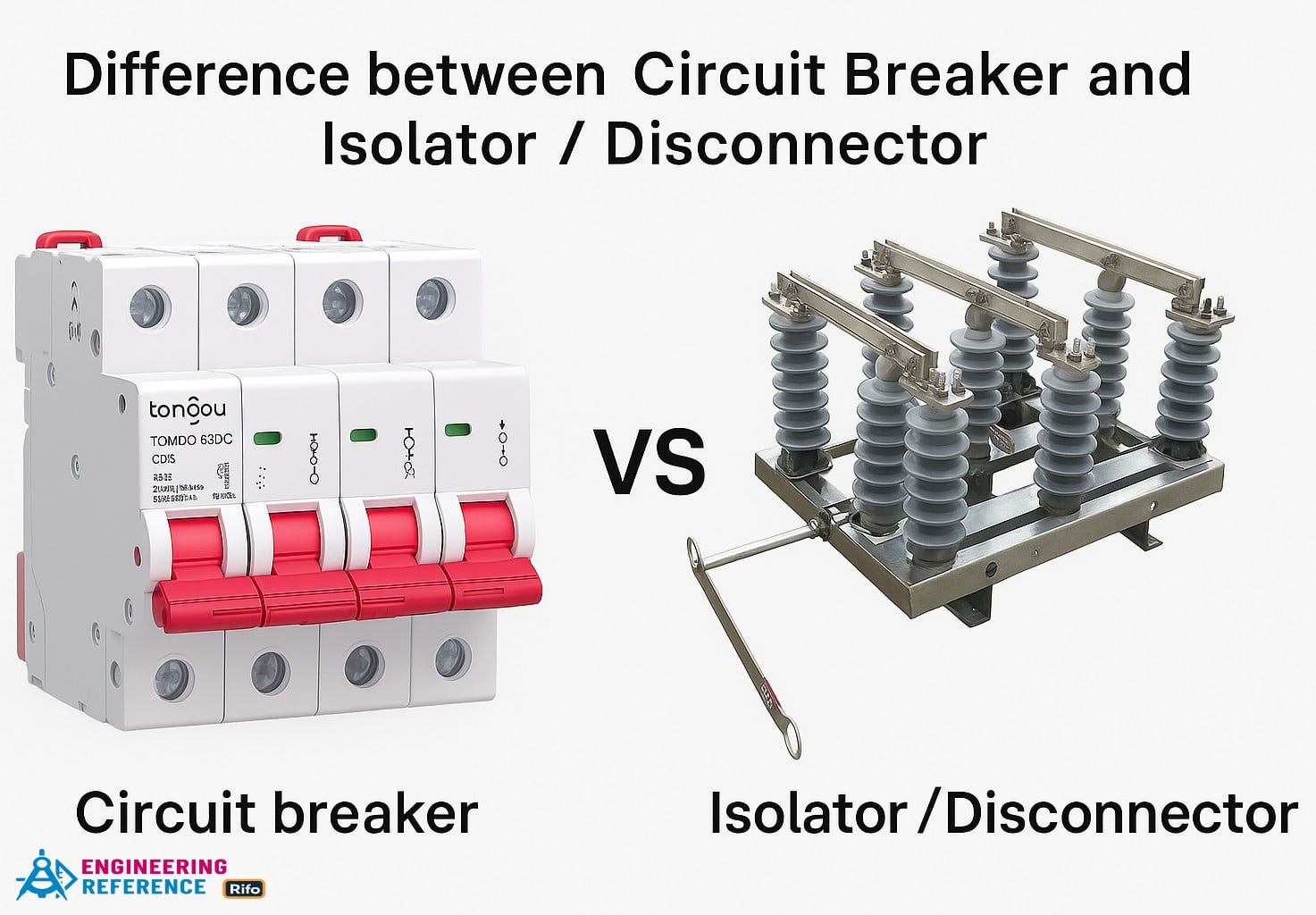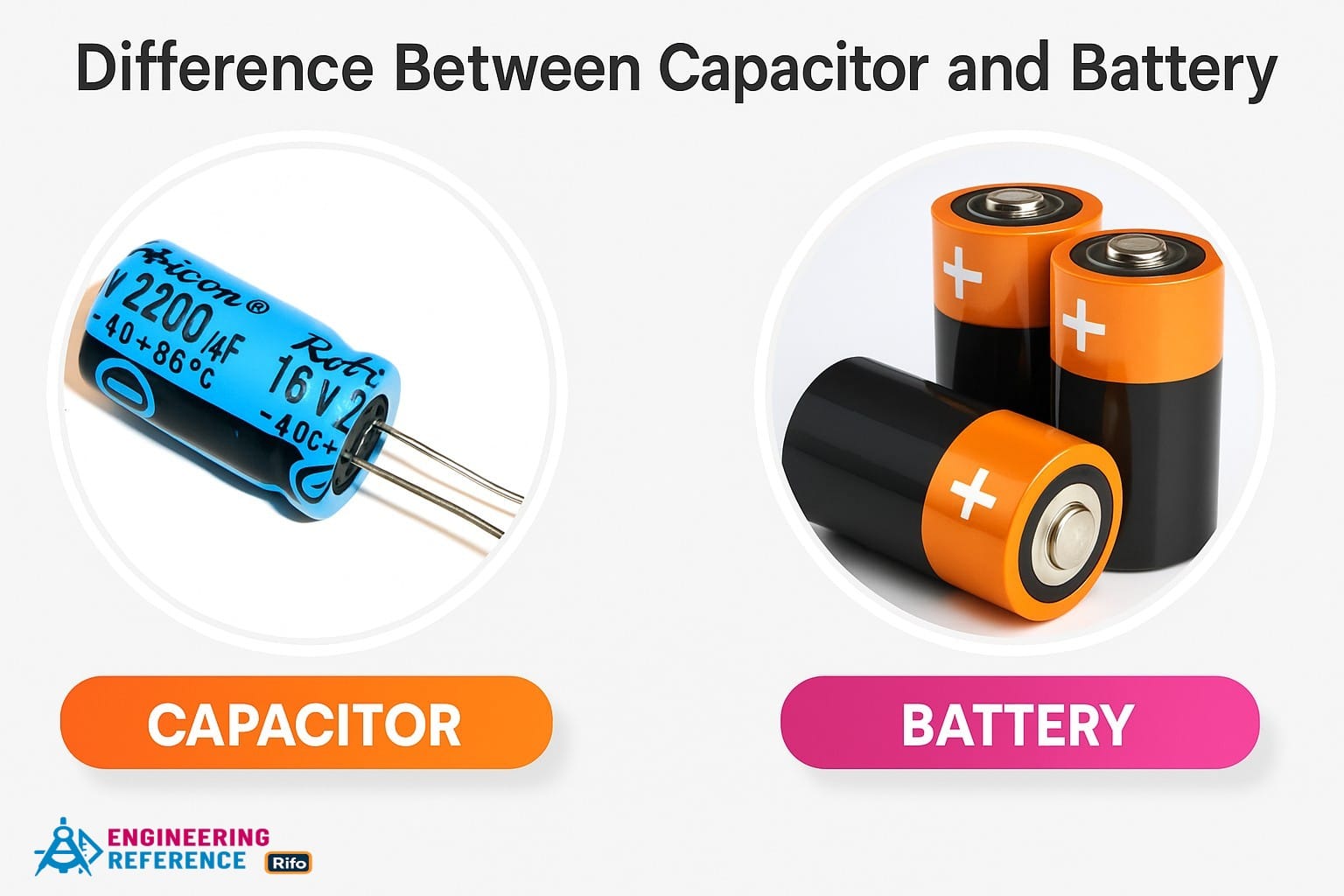Difference Between Contactor and Motor Starter
A magnetic starter works much like a magnetic contactor in both design and function. Each device uses an electromagnetic coil to close or open its contacts when electricity flows through it. This allows them to control the power going to an electric motor safely and efficiently. For example, when the coil is energized, the magnetic field pulls the contacts together, just like how a magnet attracts metal objects.
The key difference between a contactor and a motor starter is that the starter has an added overload heater element. This built-in safety feature constantly monitors the current and the temperature around the motor. If too much current flows or the motor begins to overheat, the overload element interrupts the circuit to protect the motor from damage. In simple terms, while a contactor only turns the motor on or off, a motor starter also protects it from overheating and excessive current — much like a circuit breaker guards your home appliances.
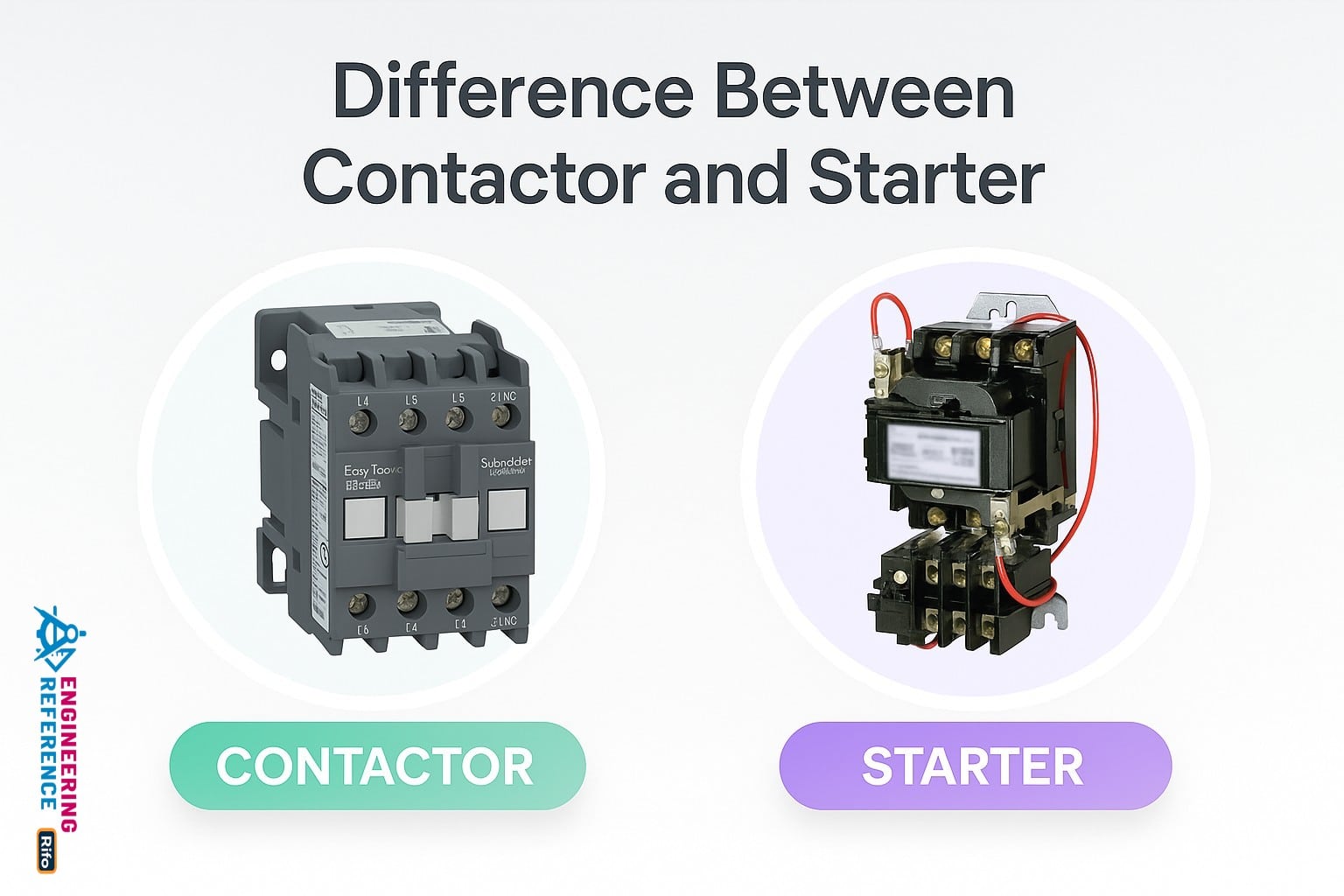
Key Differences Between Motor Starters and Contactors
A motor starter is basically a contactor combined with an overload relay that automatically disconnects the power when the motor draws too much current. This built-in protection helps prevent overheating and damage to the motor. Think of it as a contactor with an extra safety feature that acts like a “thermal fuse” for the system.
Motor Starter = Contactor + Overload Relay
The term motor starter usually refers to a complete enclosed unit that contains several components such as a contactor, control circuit elements, an autotransformer (when required), fuses, and an overload relay. These parts work together to start, stop, and protect the motor under different operating conditions.
A contactor, on the other hand, is an electrically or electronically controlled switch that turns a circuit ON or OFF without offering overload protection. It is widely used to control electric motors, lighting systems, heating circuits, and industrial automation equipment. You can think of it as a high-power version of a relay — designed to handle larger electrical loads safely.
In technical terms, a contactor is a specialized form of relay that serves as a vital part of a motor starter. Each contactor is rated based on its voltage, load current, and the number of poles (contacts) it uses. When voltage is applied to its coil, the contacts close to complete the power circuit; when voltage is removed, the contacts open and stop the current flow.
In summary:
-
If you have a motor starter, it already includes both a contactor and overload protection in one unit.
-
If you only have a contactor, it can switch the motor ON and OFF, but it cannot protect the motor from overload conditions.
Must-read reference : Difference between Circuit Breaker and Fuse
Contactor vs. Motor Starter
A motor starter is a single unit that combines two key components — a contactor and an overload relay. The contactor controls how electrical current flows to the motor by opening and closing the circuit, while the overload relay protects the motor from drawing too much current, preventing overheating and possible burnout. In simple terms, the contactor turns the motor ON and OFF, and the overload relay keeps it safe.
The contactor itself is an independent device often used in systems that require frequent switching, such as electric motors, lighting, or heating circuits. It works like a heavy-duty switch that can handle high currents repeatedly. According to NEMA (National Electrical Manufacturers Association), the main role of a contactor is to make or break an electrical power circuit as often as needed. It acts upon signals from the motor control circuit, energizing or de-energizing the power supplied to the motor.
A motor starter, in contrast, coordinates the entire motor operation. It not only controls the contactor but also integrates overload protection and sometimes additional control elements like timers or interlocks. Essentially, the motor starter serves as the brain of the motor control system, while the contactor functions as its muscle, carrying out the actual switching commands.
Motor Starters & Contactors in Motor Control
A motor starter is a key component in motor control systems, designed to safely start, stop, and protect electric motors. It can include different parts depending on the type of motor and its application. A typical motor starter may contain a circuit breaker or contactor, a system of interconnected starters, an autotransformer (to reduce the voltage during motor startup), or even a solid-state device like a Variable Frequency Drive (VFD). The VFD adjusts the motor’s voltage and frequency to provide a smooth and controlled start, reducing stress on both the motor and the electrical system. Starters are usually rated in amperes (A) or motor horsepower (HP) and are built to protect the motor from overload currents and excessive heat.
Helpful engineering guide : Difference between Capacitor and Battery
A contactor is a specialized type of relay and an essential part of most motor starters. It is rated according to the voltage or load current per pole, and it works by applying voltage to its coil, which then opens or closes the circuit. In simple terms, the contactor acts like a strong electrical “switch” that handles high power loads safely and efficiently. For example, when a signal energizes the coil, it pulls the contacts together to start the motor; when the signal stops, the contacts open and power is cut off.
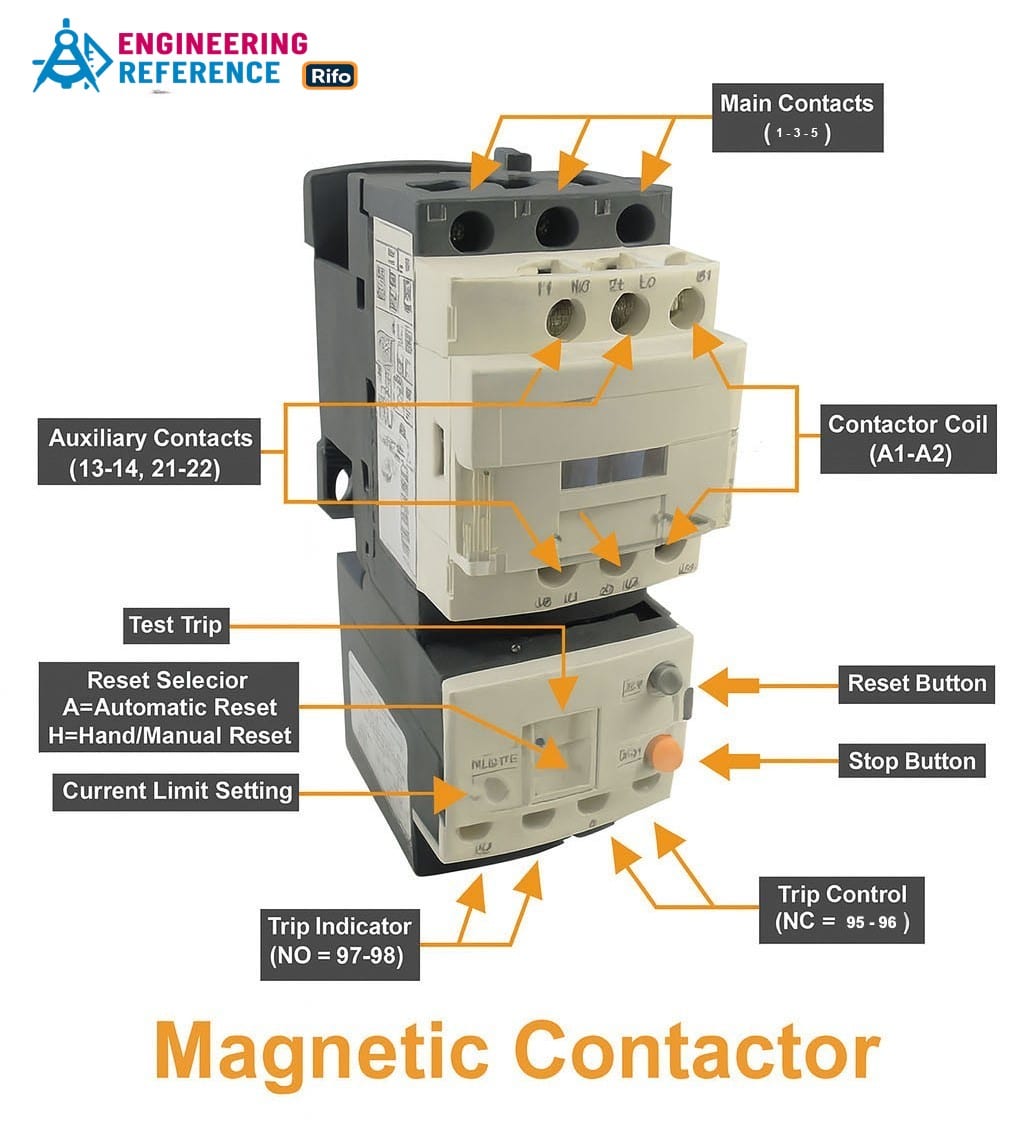
How a Contactor Differs from a Circuit Breaker
A contactor may look and act somewhat like a circuit breaker or switch, but the way it operates is quite different. Both devices control the flow of electricity, yet they serve distinct purposes in a motor control system.
For example, if a switch or circuit breaker is turned ON and the control system sends a signal to stop the current, nothing will happen automatically. The breaker or switch must be turned OFF manually, or it will only open the circuit if it becomes damaged or trips due to excessive current. This makes it a protective device, not a control device.
A contactor, however, works automatically. When there’s a problem with the power supply or the control system sends a stop command, the contactor coil immediately de-energizes, causing its contacts to open and disconnect power to the motor. This quick action prevents equipment damage and improves safety. In simple terms, a circuit breaker protects the circuit from faults, while a contactor controls power flow automatically based on control signals.
Beginner’s guide to : Difference between Circuit Breaker and Isolator / Disconnector
Good to Know:
The term motor starter generally refers to an enclosed assembly that includes a contactor, control components, an autotransformer (if needed), fuses, and an overload relay.
Motor Starter = Contactor + Overload Relay
So, if you have a starter, you already have both the contactor and overload protection built in. But if you only have a contactor, it can control power flow — yet it cannot protect the motor from overload or overheating on its own.

